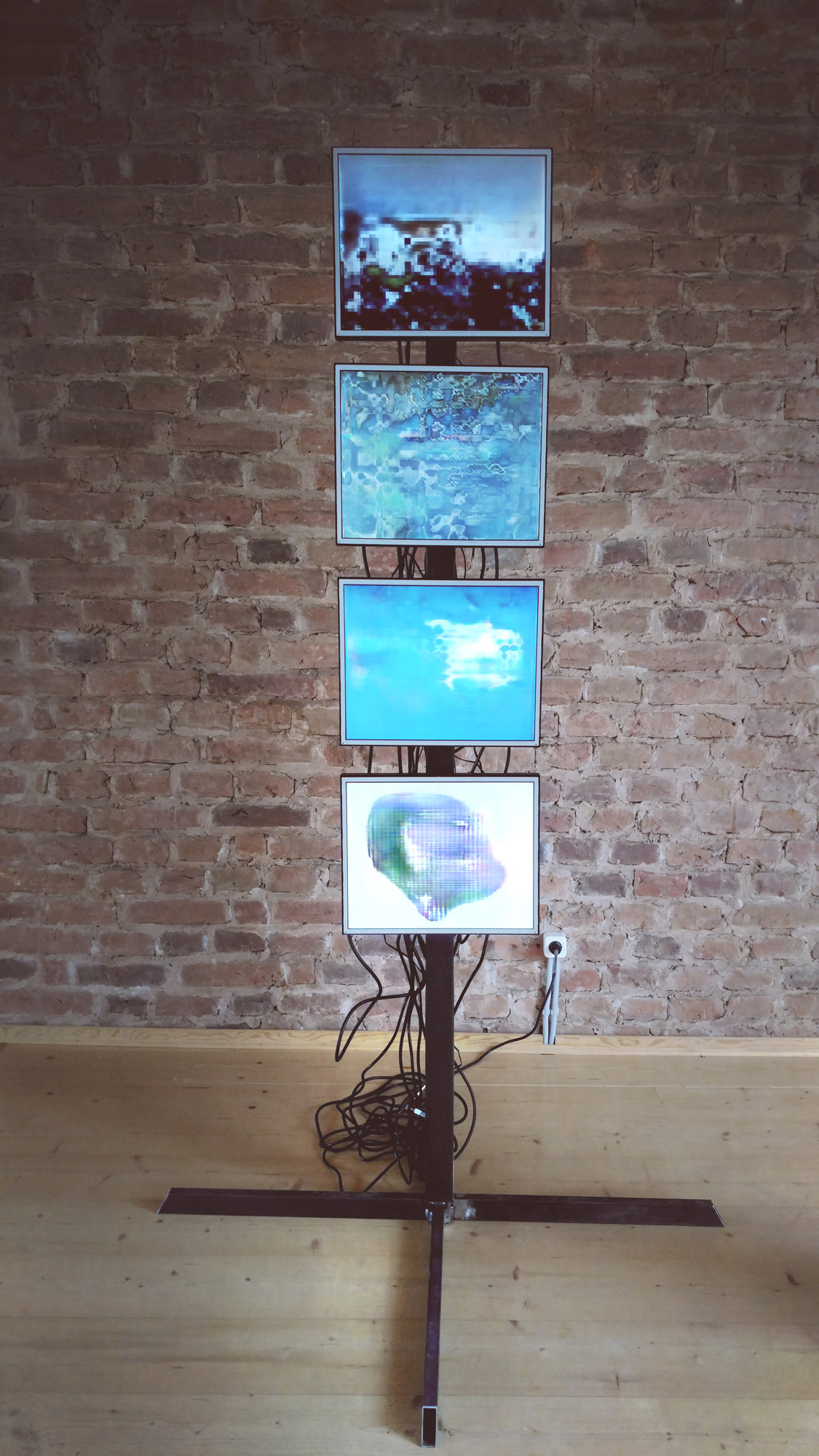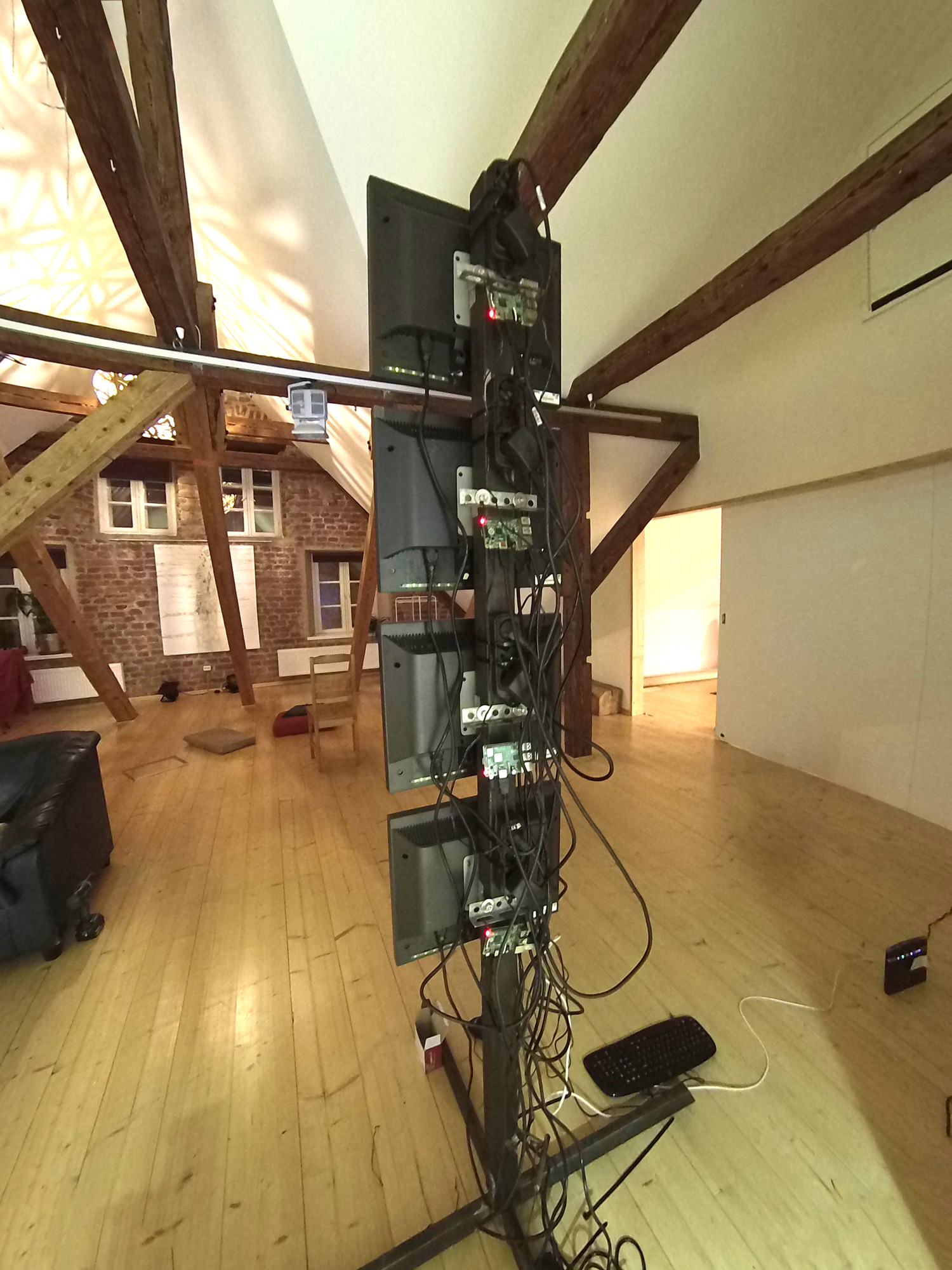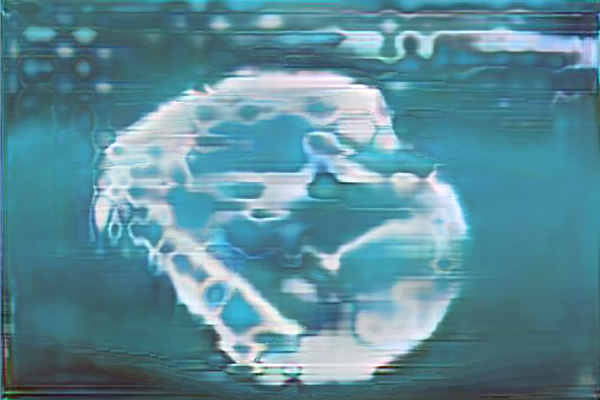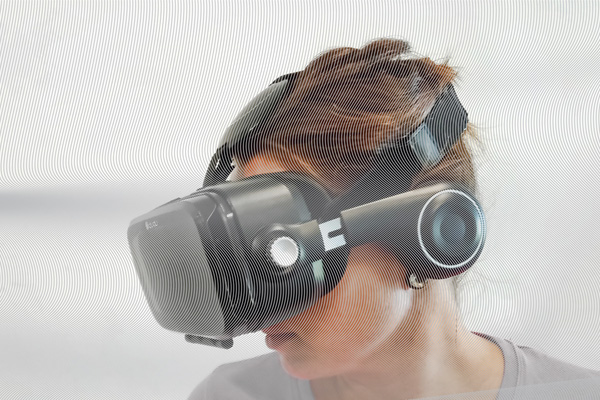PlasticLand
2019
Installation
120 x 120 x 210,5cm
The population is sinking into its own trash. Seems that our consumption has no limit. Sad thing is that society starts to think about the problem when it knocks on the door. Unfortunately, since the most of people do not see plastic and rubber tires in their backyards, continue careless plastic consumption without thinking about alternatives and recycling strategies.
Meanwhile our oceans are full of plastic. Water birds, animals and fishes have microplastic inside them. We are eating plastic. Soon we become PLASTIC!
PlasticLand is a video sculpture, which contains four videos from artificial images, which were made by training an artificial intelligence (AI) algorithm on the data sets of real images. AI neural network generates speculative images of the anthropocene, images that have never seen before.
The first video is made from images of landfills, the second is from trash on top of the water, the first is from plastic under the water, and the last is from plastiglomerates. Plastiglomerate is a new fossil that contains plastic.
The aim is to let machine to imagine what our surroundings will look like soon if society would not change their lifestyle. The artwork calls to stop and think what we are about to lose. On the other hand, the art project also proposes to use technology for coming up with solutions.
Curator and art critic Indrek Grigor describes the artwork as following:
Their installation “Plasticland” is like a geological survey each screen representing one stage in the development of a new geological layer. It starts at the top with an image of a landfill, follows the trash down from there to the surface of water, dives under the surface and finally settles into the geological sediment that has been given the name plastiglomerate – a mixture of natural derbi and melted plastic that is said to define the geological era of human activity on the surface of planet Earth.
The images you see in the screens are generated by an artificial intelligence. A technology that is out there but which is still so new that we don’t even know what it’s capable of, but which without a doubt has a huge potential. At least as huge as plastic had and actually still has. Once plastic was invented it solve many of our problems connected to the shortage and character of natural materials. What we did not anticipate back then, was what a problem plastic waste would become. But now we have to take responsibility and find the solutions which as Varvara & Mar acknowledge can only lay in future technology.
Exhibited:
Traveling exhibition “NOT out of sight, NOT out of mind” in frames of WasteArt project in Latvia and southern Estonia for 2 years (2019-2020)




